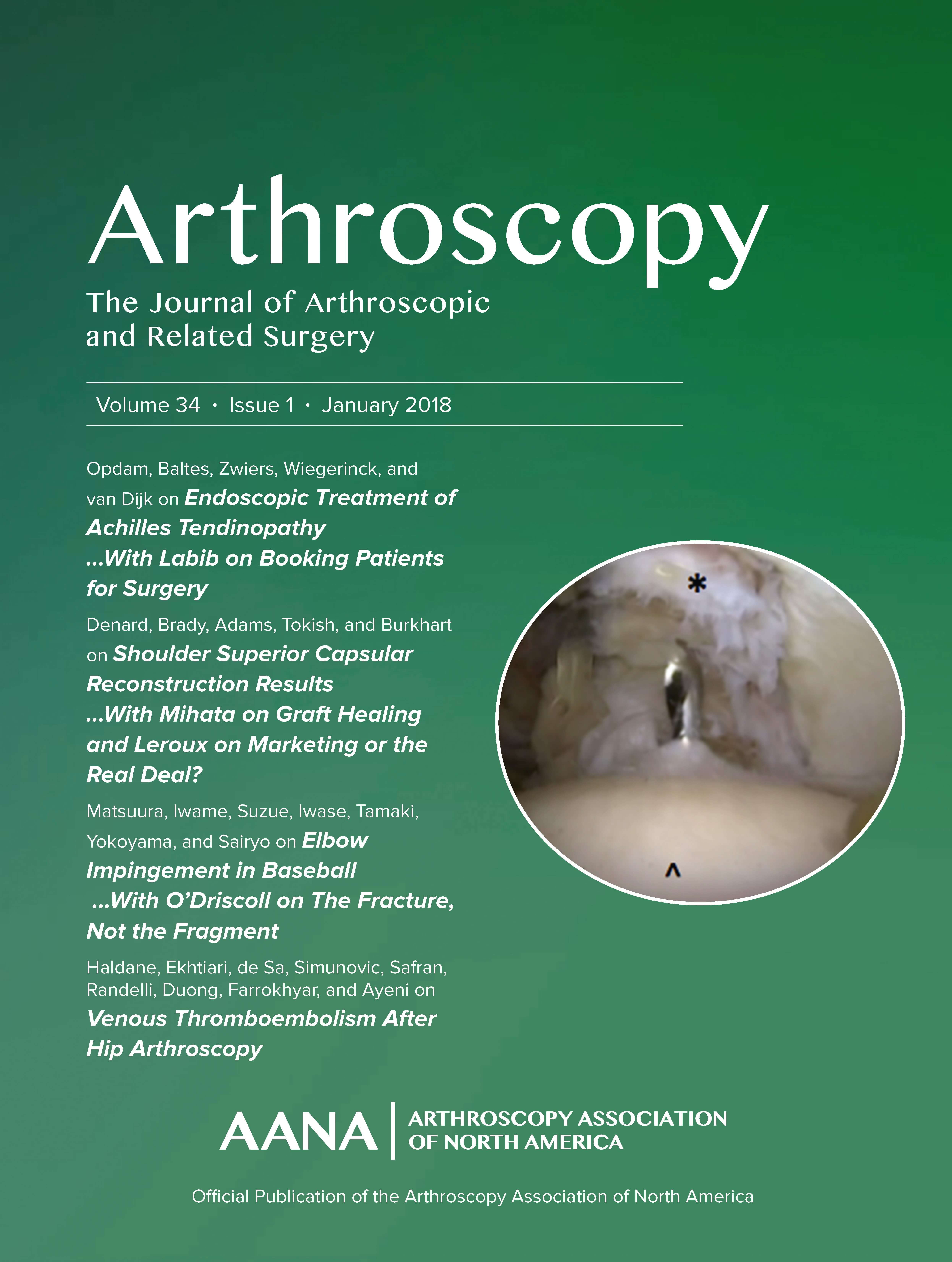
Rehabilitation after arthroscopic meniscectomy not affected by tourniquet

Rehabilitation after arthroscopic meniscectomy not affected by tourniquet
Tourniquet use does not affect rehabilitation, return to activities, and muscle damage after arthroscopic meniscectomy: a prospective randomized clinical study
Arthroscopy. 2012 Dec;28(12):1812-8. doi: 10.1016/j.arthro.2012.06.017. Epub 2012 Oct 22Did you know you're eligible to earn 0.5 CME credits for reading this report? Click Here
Synopsis
80 patients who underwent arthroscopic partial meniscectomy between January 2010 and March 2011 were randomized to undergo arthroscopic meniscectomy with either an inflated (group A) or a deflated tourniquet (group B) to determine if tourniquet use affects rehabilitation. The patients came in for follow-ups 8, 15, 30, and 60 days after the operation. Results displayed that if tourniquet was used for less than 30 minutes during arthroscopic meniscectomy it would not affect postoperative pain, nor would it affect return to light and moderate sport activities.
Was the allocation sequence adequately generated?
Was allocation adequately concealed?
Blinding Treatment Providers: Was knowledge of the allocated interventions adequately prevented?
Blinding Outcome Assessors: Was knowledge of the allocated interventions adequately prevented?
Blinding Patients: Was knowledge of the allocated interventions adequately prevented?
Was loss to follow-up (missing outcome data) infrequent?
Are reports of the study free of suggestion of selective outcome reporting?
Were outcomes objective, patient-important and assessed in a manner to limit bias (ie. duplicate assessors, Independent assessors)?
Was the sample size sufficiently large to assure a balance of prognosis and sufficiently large number of outcome events?
Was investigator expertise/experience with both treatment and control techniques likely the same (ie.were criteria for surgeon participation/expertise provided)?
Yes = 1
Uncertain = 0.5
Not Relevant = 0
No = 0
The Reporting Criteria Assessment evaluates the transparency with which authors report the methodological and trial characteristics of the trial within the publication. The assessment is divided into five categories which are presented below.
3/4
Randomization
3/4
Outcome Measurements
3/4
Inclusion / Exclusion
4/4
Therapy Description
2/4
Statistics
Detsky AS, Naylor CD, O'Rourke K, McGeer AJ, L'Abbé KA. J Clin Epidemiol. 1992;45:255-65
The Fragility Index is a tool that aids in the interpretation of significant findings, providing a measure of strength for a result. The Fragility Index represents the number of consecutive events that need to be added to a dichotomous outcome to make the finding no longer significant. A small number represents a weaker finding and a large number represents a stronger finding.
Why was this study needed now?
Arthroscopic meniscectomy has gained popularity with the improvement of pneumatic tourniquet technology allowing for and improved visual field and reduced operative time. However, studies have shown that tourniquet use was partly to blame for issues regarding nerve palsy, venous thromboembolism, arterial embolization, skin ulceration, swelling, joint stiffness, muscle weakness, histologic changes, electromyographic changes, and increased serum creatine phosphokinase (CPK) levels that had the potential to last up to 6 months. This study aimed to determine what effect the use of a tourniquet has during arthroscopic meniscectomy on the rehabilitation rate, time taken to return to sporting activities, and muscle damage of patients.
What was the principal research question?
What effect did the use of tourniquet during arthroscopic meniscectomy have on the rehabilitation rate, time taken to return to sporting activities, and muscle damage of patients, when measured up to 60 days following the operation?
What were the important findings?
- There was no significant difference in VAS pain between the groups at 8 days (p=0.22) and 15 days (p=0.43) following surgery
- There was no significant difference in knee ROM between the groups at 8 days (p=0.91) and 15 days (p=0.96) following surgery
- Patients in group A could stand without crutches 13.4 days after operation, while patients in group B could stand without crutches 12.9 days after operation (p=0.9, observed power a=0.36)
- There was no significant difference in the amount of time required to get back to light work and sports between the two groups. (group A: p=0.34, observed power a=0.46; group B: p=0.23, observed power a=0.64)
- There was no significant difference in serum CPK levels before and after the surgery between the two groups. (p=0.3, observed power a=0.82)
- There was no relationship discovered between tourniquet time and ROM, VAS scores, or CPK level after the operation (minimum p=0.14)
- There was no significant difference in operative time between the two groups. The operative time for group A was 27.5 +/- 12.5 minutes, while the time for group B was 31.2 +/- 12.1. (p=0.83)
What should I remember most?
The results demonstrated that during arthroscopic meniscectomy if tourniquet was used for less than 30 minutes, then it would not influence postoperative pain, muscle damage, nor would it affect return to light and moderate sport activities.
How will this affect the care of my patients?
The results may help provide assurance to patients who may be worried about whether or not they want to use a tourniquet when undergoing an arthroscopic meniscectomy. However, since muscular strength evaluation was not assessed, further research should be done in order to determine what effect the use of a tourniquet may have on muscular strength.
Learn about our AI Driven
High Impact Search Feature
Our AI driven High Impact metric calculates the impact an article will have by considering both the publishing journal and the content of the article itself. Built using the latest advances in natural language processing, OE High Impact predicts an article’s future number of citations better than impact factor alone.
Continue



 LOGIN
LOGIN

Join the Conversation
Please Login or Join to leave comments.